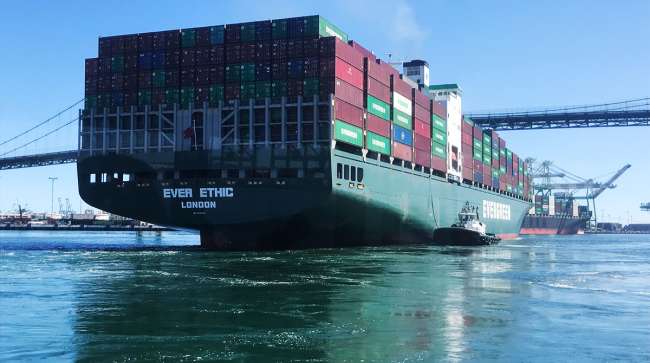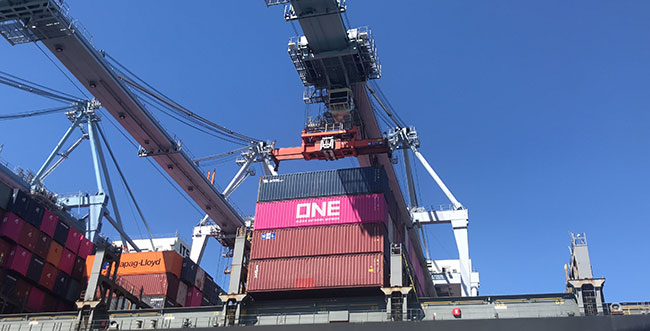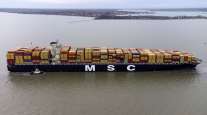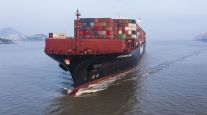Large Ocean Vessels Create Challenges for Shippers

LONG BEACH, Calif. — Ports throughout the United States are prepared to accept megaships carrying 18,000 TEUs or more, but while the larger vessels create efficiencies for maritime providers, they take more time to unload and can create bottlenecks for those at the port and the drivers hauling the loads.
Laura Crowe, senior director of global logistics for Walmart Inc., said smaller ships with daily deliveries would be ideal as opposed to ships with 18,000 20-foot-equivalent units that take five days to unload. “We would love for the carriers to go back to smaller ships, but we can’t make that happen,” she said. “We at Walmart can’t even make that happen.”

Jensen
The problem with the larger ships is the ratio between how much time is spent at sea versus in port, said Lars Jensen, CEO of SeaIntelligence Consulting, which is based in Copenhagen, Denmark.
“For the larger ships, you’re lucky if that ship spends 60% of its time actually sailing,” he said. “We are getting fewer weekly services in all lanes.”
Crowe and Jensen were among those who spoke at the Intermodal Association of North America’s Intermodal Expo 2018 here.
As ships get larger, they require longer berths and bigger cranes, which also create additional costs. Jensen evaluated the cost savings associated with larger ships.

Containers at the Port of Long Beach. (Mindy Long)
“We felt that going from 10,000 to 14,000 TEUs was very good idea; 14,000 to 18,000 at best was break even. Going from 18,000 to a conceptual 25,000 TEU is a very bad idea,” he said.

More From IANA
- Panelists: Automation, Electrification Could Advance Faster in Intermodal
- Dave Manning Honored With IANA’s Silver Kingpin Award
- Retail Growth, Consumer Expectations Add to Supply Chain Demands
- Intermodal, 3PL Outlook Remains Strong
- Brokerage Within Intermodal Faces Added Complexity
- Tariffs Could Spur Early Imports, Higher Inventories
- Supply Chain Partners Focus on Efficiency to Improve Capacity
However, the trend toward larger ships will only continue.
“You will see fewer weekly services and larger vessels,” Jensen said, adding that by 2020 there will be 120 to 130 vessels that carry 18,000 TEUs or more.
Fewer ocean deliveries have resulted in more hub-and-spoke deliveries as retailers try to move goods throughout the country as quickly as possible.
“From that perspective, if the industry wants to go back … 14,000 is more cost effective,” Jensen said.
To help streamline the delivery process once the ship docks, Walmart has gotten more precise with how the vessels are loaded, Crowe said. “We’re trying to get very specific and detailed in the supply chain. Ten years ago, you just gave it to an ocean carrier. Now you have to communicate throughout the supply chain,” she said.
Walmart, which is based in Bentonville, Ark., ranks No. 3 on the Transport Topics Top 100 list of the largest private carriers in North America.




